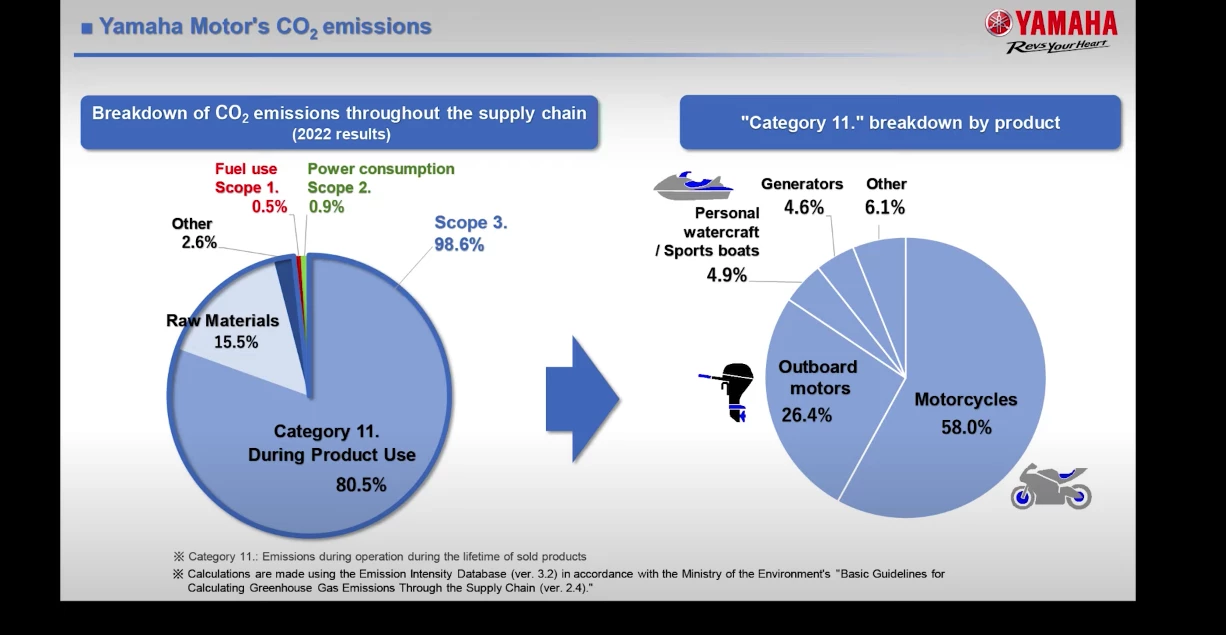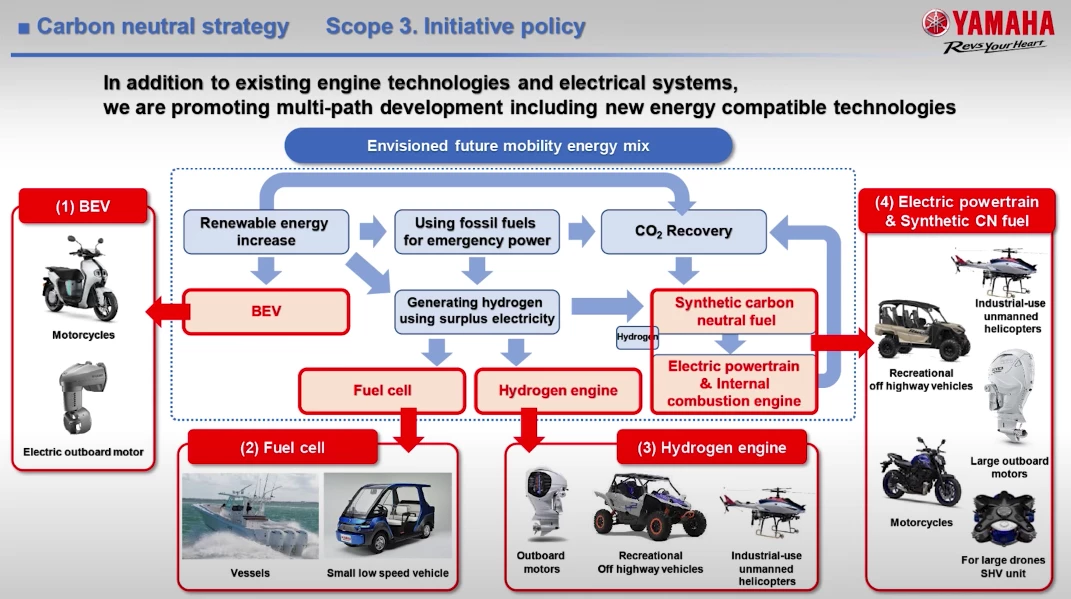Yamaha Motor has already pushed to the front of the pack in developing hydrogen engines for automobiles and off-highway off-roaders, and now it's looking to launch its hydrogen-combustion program into the water. A potentially critical piece of its greater carbon neutrality program, Yamaha's new hydrogen outboard prototype will debut at the upcoming 2024 Miami International Boat Show, previewing a cleaner future for boaters and marine consumers.
Long before government and industry were rapidly prodding along cleaner, more carbon neutral motor vehicles, Yamaha was experimenting with everything from transforming electric motorcycles to methanol fuel cells. Its ingenuity hasn't slowed over time, either – in recent years it's explored a water-powered motorcycle, a steerable electric marine drive and swappable bike batteries. And it's been hard at work on a 5.0-liter V8 hydrogen combustion engine for none other than Toyota, possibly hydrogen's most well-known proponent.

As it prepares to meet carbon neutrality goals, Yamaha plans to continue its multidirectional clean energy strategy, the company emphasized during a marine technology presentation last week. It expects Scope 1 and 2 neutrality to come by 2035, but Scope 3 emissions are a whole different animal, accounting for a whopping 98.6% of Yamaha's carbon emissions, according to company estimates.
The Scope 3 category runs the full length of the supply chain, encompassing everything from emissions created during the procurement and processing of raw materials to those created while selling and delivering the finished product. The most significant portion (over 80%), though, comes from the end use of Yamaha products, including motorcycles, personal watercraft and outboard engines.

Yamaha realizes that different products and markets will demand different clean energy approaches. It believes the water resistance involved in boating, along with the widely varying needs of segments that include commercial fishing and personal recreation, make the low power density of battery electric systems impractical for many marine applications – not news if you follow the limited ranges and use cases of the average electric boat.
Yamaha has no plans of ignoring all-electric solutions but will pursue them as part of its greater multi-pronged approached that will also include carbon-neutral synthetic fuels, fuel cells and hydrogen engines. We've seen more movement in fuel cell-electric powertrains when it comes to hydrogen's marine applications, but Yamaha is accelerating the development of hydrogen-combustion outboards, a prototype of which it will premiere at the Miami show in February. Like Yamaha's land-based hydrogen engine counterparts, the H2 outboard will create motive combustion without CO2 emissions while allowing Yamaha to apply technologies it's mastered over decades of gasoline and diesel engine design.

Yamaha hasn't released any additional specs or background information on the design of the hydrogen outboard but will presumably reveal more in Miami, which runs between February 14 and 18. The company also plans to showcase its latest autonomous boat docking technology and biofuel breakthroughs at the show.
Source: Yamaha Motor





